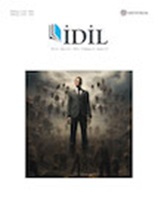SANAT TARİHİNDE KADIN BEDENİNİN DEĞİŞEN İMGESİ
THE CHANGING IMAGE OF THE FEMALE BODY IN ART HISTORY
Author(s): Burcu Kaya KaradumanSubject(s): Gender Studies, Visual Arts, Gender history, Sociology of Art, History of Art
Published by: Sanat ve Dil Araştırmaları Enstitüsü
Keywords: Art history; woman; ımage; western art; female body;
Summary/Abstract: Throughout art history, the portrayal of the female body has been one of the most significant subjects reflecting the societal values and beliefs of the respective eras in artworks. From ancient times to the present day, artists have depicted the female body with various interpretations. In early artworks, the female figure was often depicted as the Mother Goddess. These depictions typically carried meanings related to fertility, abundance, and the guardian of nature. Clues regarding how Paleolithic hunter-gatherers perceived the female figure can be found in portable art pieces. For example, a figurine dating back to approximately 20,000 B.C. known as the "Venus of Willendorf," could be interpreted as a symbol of fertility and well-being, or even as a representation of abundance. In ancient times, female figures were often idealized for their beauty, but during the Renaissance period, a more realistic approach emerged. In the 19th century, female figures were portrayed in a romantic style. Even today, the female body continues to hold a significant place in art. This research focuses on the representation of women in the art world, analyzing how the image of women has evolved throughout the history of art. The study provides examples of different depictions of the female body in various periods and references important painters from Western art history. It employs a qualitative research approach, including a literature review.
Journal: İdil Sanat ve Dil Dergisi
- Issue Year: 12/2023
- Issue No: 111
- Page Range: 1867-1876
- Page Count: 10
- Language: Turkish

